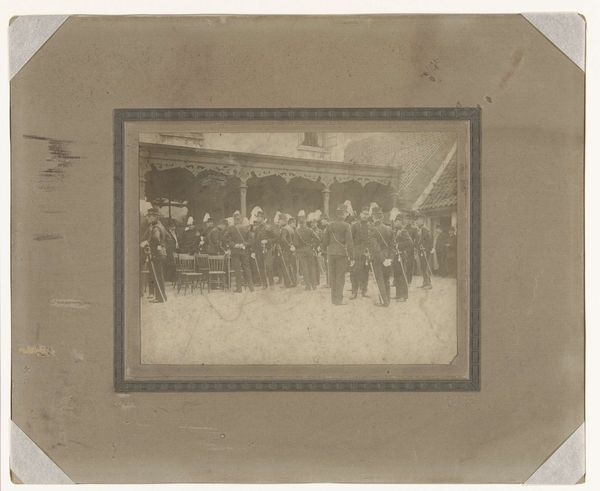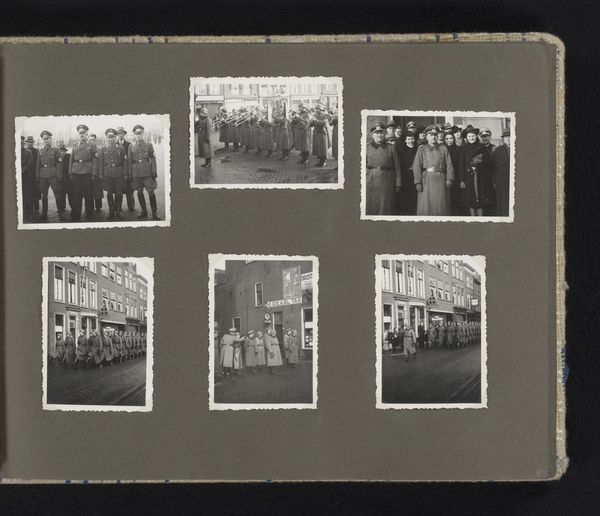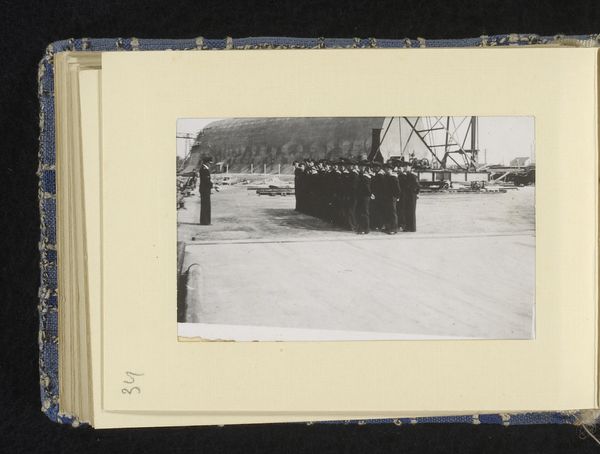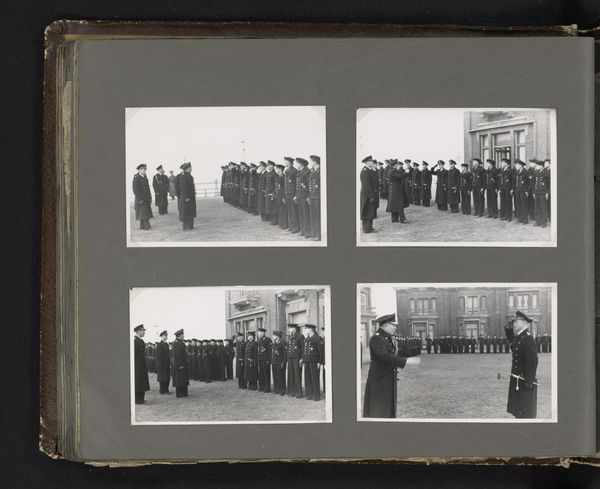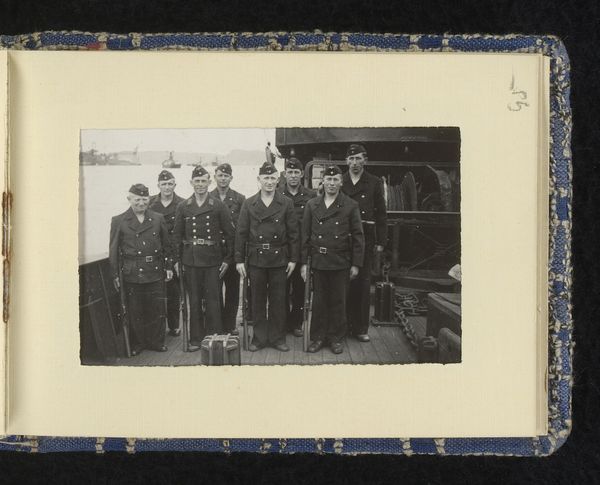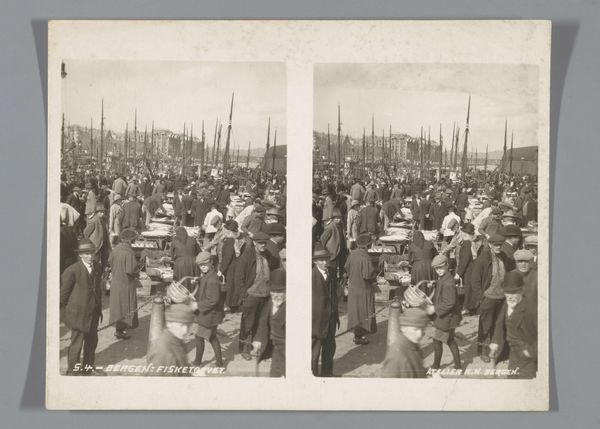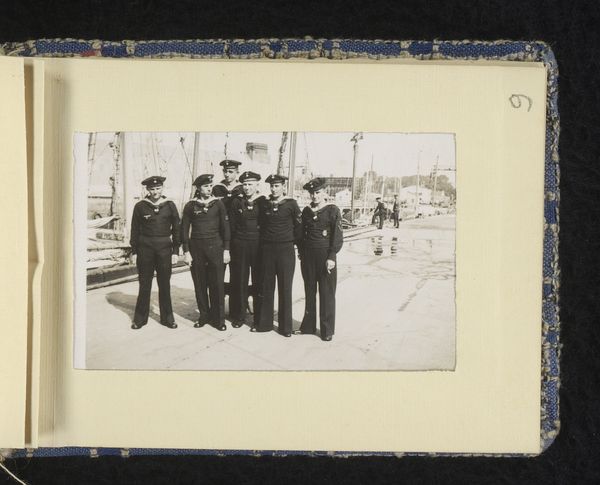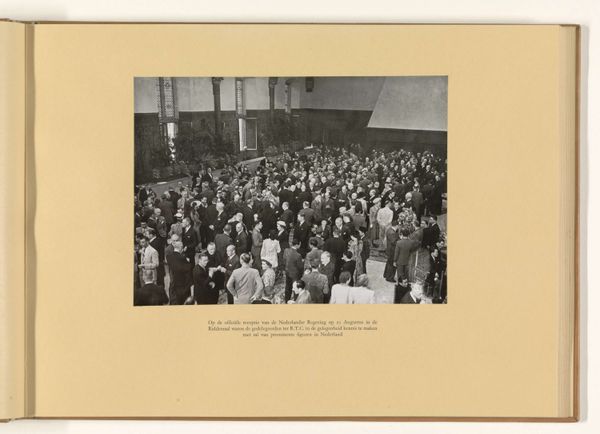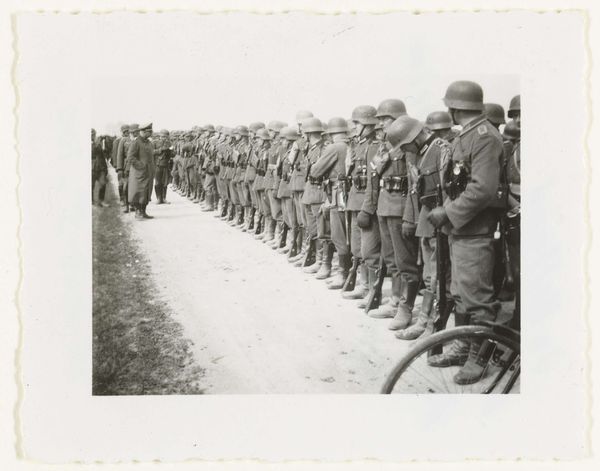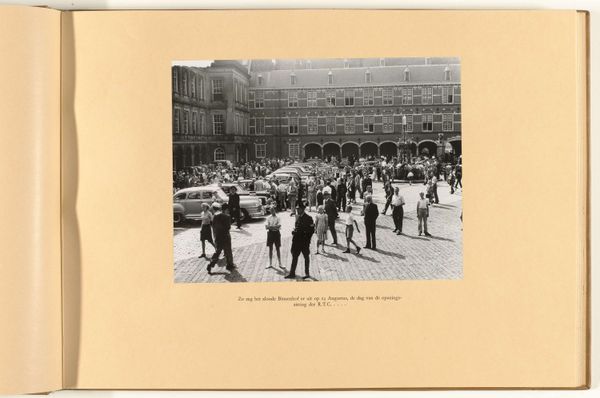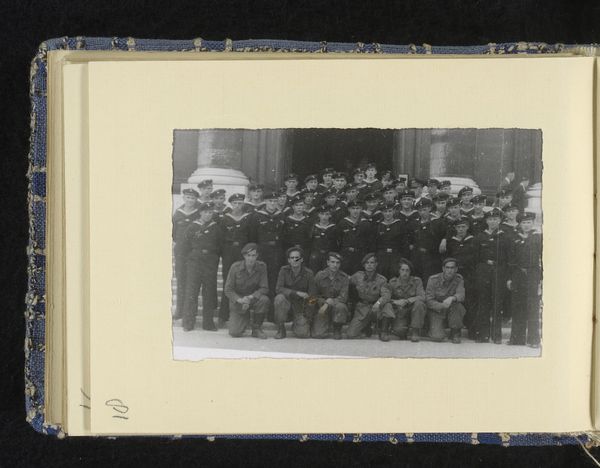
print, photography
#
print photography
# print
#
archive photography
#
photography
#
group-portraits
Dimensions: height 156 mm, width 230 mm, height 298 mm, width 360 mm
Copyright: Rijks Museum: Open Domain
Curator: Here we have a fascinating group portrait titled "Groepsportret van de Amsterdamse Postharmonie," estimated to be from between 1920 and 1940, snapped by Fotocentrale. Editor: Wow, it has an almost militaristic air, doesn’t it? All those uniforms lined up, a sea of serious faces. There's an imposing presence about it. Curator: Yes, there’s a formality that's typical of group portraits of this era, almost a rigid structure. Look closely at the composition—they’re standing in front of a train, emphasizing their connection to postal service and the literal delivery of communications. Editor: Precisely! The railway car really anchors them to the specific labour and system they support. We need to think of the work behind maintaining infrastructure for something as crucial as postal communication—a massive system based on the railways and a whole workforce dedicated to its function! It would also give some context as to why this image was commissioned, presumably. Curator: It's also a beautifully composed print—it captures a moment in time when photography itself was becoming a more accessible and standardized tool, used to document societal structures and workforce camaraderie, however forced it may be! Look at the contrast between light and shadow; the texture on their uniforms. I also get the feeling there is more than just seriousness, but genuine sense of commitment on the faces of the portrayed members. Editor: Consider, too, what went into producing this photograph—the chemicals for developing, the paper itself, all commodities produced within specific social and economic conditions. This isn't just a document; it's an artifact representing a nexus of industrial and social relations! I wonder if all those handsome suits were part of work-provided uniforms, though. Curator: A wonderful point, they really do add to that feeling of uniformity. The photo feels somehow very grounded to time and place because of the almost casual composition. Editor: Ultimately, looking closely reminds us of the tangible labour, material processes, and infrastructure underlying something we often take for granted – how letters made their way from one person to another! Curator: Agreed! It brings to life the often-invisible networks that connected people in the early twentieth century and, somehow, makes you think more deeply about these past human relationships.
Comments
No comments
Be the first to comment and join the conversation on the ultimate creative platform.
